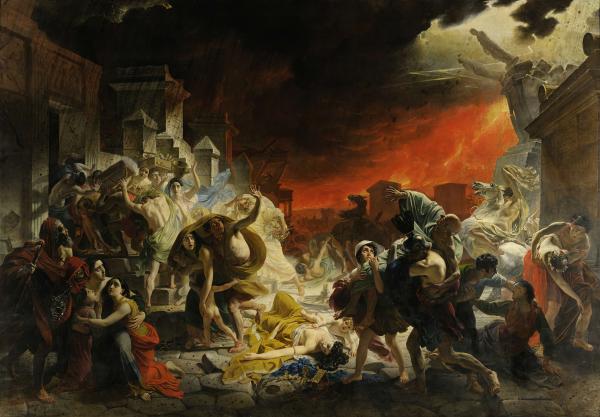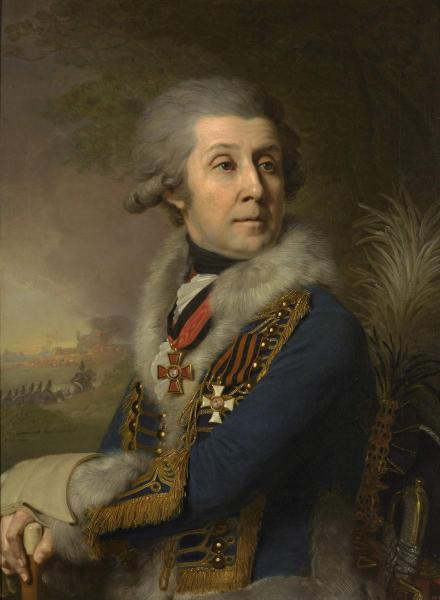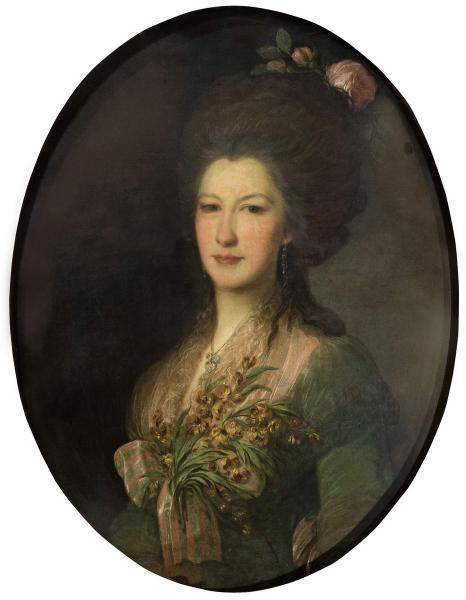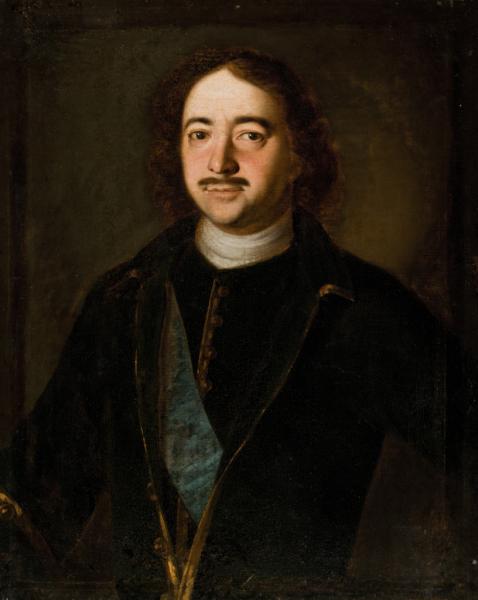The artist is Bryullov

In search of a plot for a large work, the artist was guided by the desire to show a certain real event of the past on an accurate documentary basis. During his stay in Italy, the artist had a chance to visit archaeological excavations that discovered the ancient cities of Pompeii and Herculanum, buried during the eruption of Vesuvius on August 24, 79. The creation of the picture was preceded by a close study of historical sources (including the letters of an eyewitness, the historian Pliny the Younger) and the monuments of antiquity.
The canvas glorifying the artist depicts not only the tragedy of the people who die in a clash with the elements, but also the change of historical eras – the emergence on the wreckage of the old pagan world of the new Christian civilization. The tragedy awakens in heroes a variety of feelings – despair and fear, love and the desire to protect loved ones. This allowed, according to N. AT. Gogol, show everything "Supreme, physical and moral perfection" man. Following the traditions of the art of revival, the artist depicted himself in the left part of the picture with the belongings of the painter. The chosen topic is highly characteristic of the art of a romantic era-it was used in music (Opera Pacini) and in literature (novel by Bulver-Litton).
The official customer of the picture is an industrialist, a scientist and philanthropist A. N. Demidov. Initially, the canvas was shown with great success in Rome, Milan, Paris.
In the summer of 1834, the picture was sent from France to St. Petersburg, where Demidov presented it to Emperor Nicholas I. In August 1834, the picture was placed in the Hermitage, and at the end of September of the same year, the canvas was moved to a separate hall of the Academy of Arts for a general review. In 1851, the picture entered the new Hermitage, and in 1897 was transferred to the collection of the Russian Museum of Emperor Alexander III (now the State Russian Museum).
+ About the restoration of the work
– Hide the text about restoration
The state of safety before restoration:
The canvas “burned out” from the oil, which passed to the back, became fragile, destroyed. Does not provide tension strength. Two layers of restoration edges are duplicated on the back, there are more than 50 old plasters installed at different times in the places of breakthroughs. The most significant-“g”-shared)-75 length.6 cm. On the front side – deformation of the base along the edges. Numerous records that have changed in color and tone. Colorful surface muddy due to significantly decomposed varnish layers.
Complex of the events:
The colorful layer and soil were strengthened and repressed twice. Two layers of old edges and plasters installed in the place of breakthroughs were removed on the back of. On the perimeter, inserts from the canvas similar to the author’s. The back side is cleaned from pollution, glued and duplicated in a classic way (from a working subframe) on a new canvas. Toning that changed in color were deleted in places, in places adjusted. The lacquer surface is regenerated.
Keeping a story. Restoration workshop of the Russian Museum – 100 years. SPb, 2022. With. 106-107.
We recommend
|
“Secret meaning of famous paintings”. A mini tour of the leading specialist of the excursion and lecture department of Valery Akhunov |
||
|
|
Restoration of the painting “The Last Day of Pompeii” (1995) |
|
|
Lecture a.AND.Kurbanovsky “under the inflamed ashes”. Archeology of the Masonic look: “The last day of Pompeii” to.P.Bryullov |
||
Programs/Films about this work in the media text:

To.P. Bryullov. “The last day of Pompeii”
Creation year: 2005 | Multimedia film | Language:
Multimedia film with interactivity elements presents the picture for.P.Bryullov “The Last Day of Pompeii” from the collection of the Russian Museum, the history of its creation, historical, archaeological monuments and works of ancient Roman art.

Bryullov (the last day of Pompeii). From the cycle "Tales of Russian artists" (To the country of museums with Fafaley)
Creation year: 2002 | Video painting | Language: | Duration: 13:00
“Karl Bryullov came to excavation of the city of Pompeii and wanted to see what was in this city, many centuries ago, when the city still lived its usual life, but he could not imagine this, because there were stones, ruins, the remnants of old buildings. And then Bryullov went to the threshold of one house, took out his magic mirror. And this mirror seemed to come to life. And he saw a beautiful city of Pompeii, he saw beautiful people…”

To.P. Bryullov. “The last day of Pompeii”
Creation year: 2001 | Video painting | Language: | Duration: 26:00
The film presents Bryullov’s picture to.P. The Last Day of Pompeii talks about the history of the creation of the canvas, historical documents, personal impressions of the artist who visited Pompeii.



